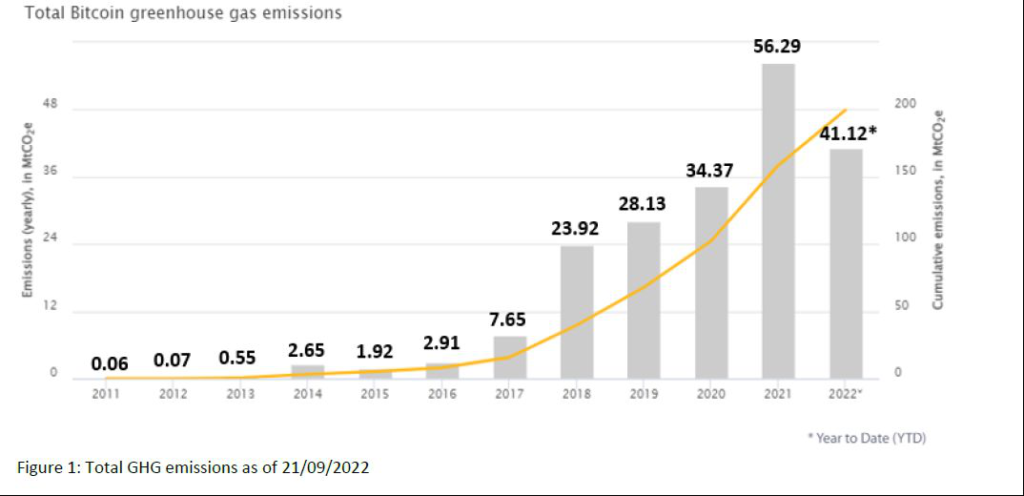(Bloomberg) — Greenhouse gas emissions from the Bitcoin mining industry are on the decline this year as dwindling profit margins drive miners to operate more efficient machines.
(Bloomberg) — Greenhouse gas emissions from the Bitcoin mining industry are on the decline this year as dwindling profit margins drive miners to operate more efficient machines.
Bitcoin miners’ emissions are estimated to be 14.1% lower this year than in 2021, according to annualized data in a new report released Tuesday from the Cambridge Center for Alternative Finance.
That represents about 0.1% of the global emissions, or about half of what gold miners generate. Fossil fuels account for almost two-thirds of the total electricity used by the industry, with coal being the largest of such energy sources, the report said.
Bitcoin miners use energy-intensive computers to validate the transaction data encrypted by the blockchain of the world’s biggest cryptocurrenncy.
They earn rewards in the form of the token. More efficient mining machines have pushed the computing power for the entire network to a record high, while reducing energy consumption. Older generations of rigs have ceased to be profitable, with electricity costs outweighing mining revenue due to low Bitcoin prices and high energy prices.
“Given the recent sharp decline in mining revenue per unit of computing power provided, a shift to more efficient hardware occurs, which leads to the, at least temporary, retirement of older, less efficient hardware,” the report said.
Estimating Bitcoin’s environmental footprint is based on a theoretical model that uses publicly available data rather than actual observation, according to the report.
Some Bitcoin miners run their mining facilities off-grid, which makes it hard to monitor their energy consumption.
The new data comes from CCFA’s new index tool. The updated version provides daily estimates of the annualized and total greenhouse gas emissions related to Bitcoin and a breakdown of the electricity mix.
Launched in 2019, the index tool has been one of the most commonly used data sources to measure Bitcoin’s energy consumption.
More stories like this are available on bloomberg.com
©2022 Bloomberg L.P.











